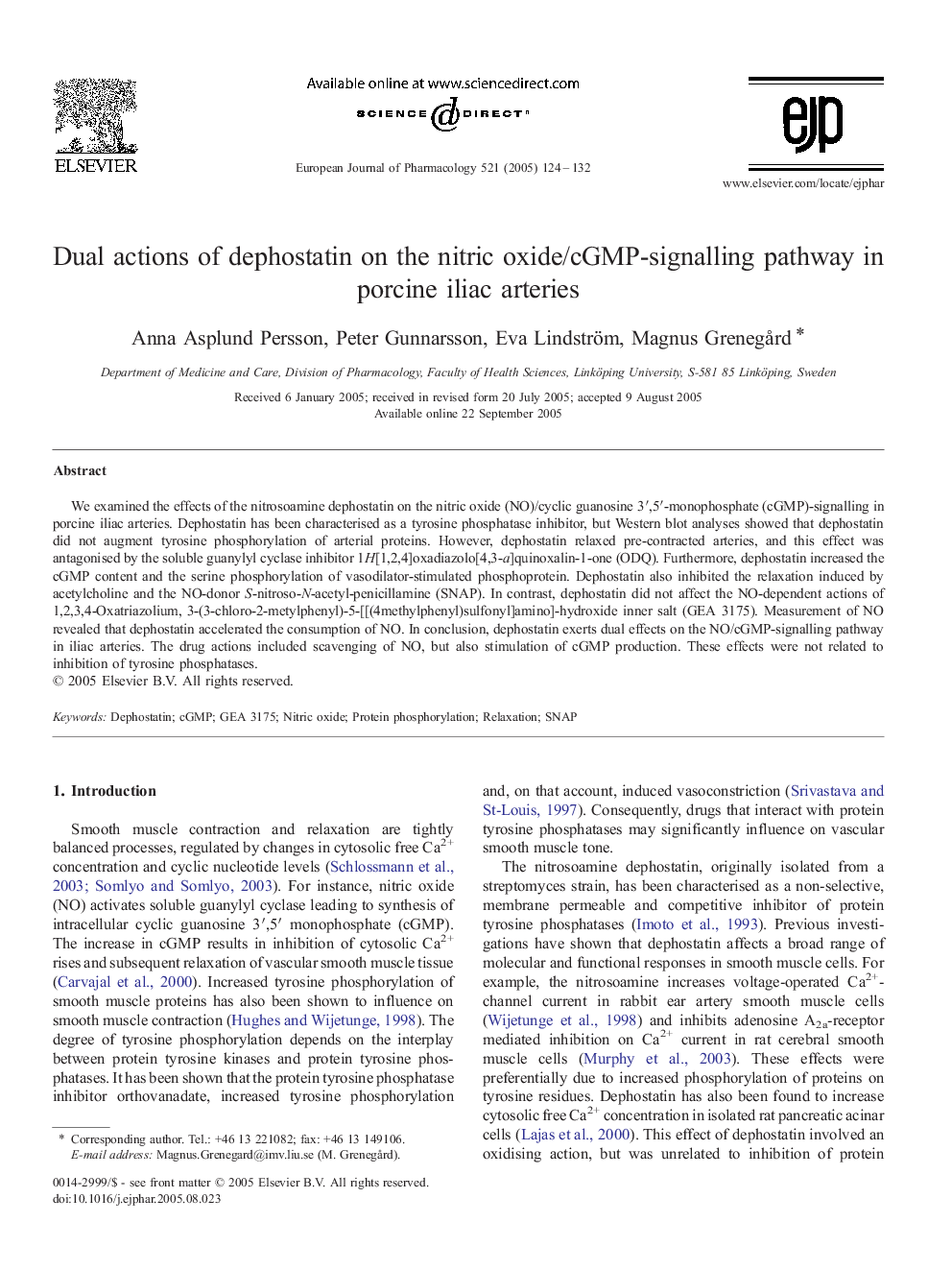| Article ID | Journal | Published Year | Pages | File Type |
|---|---|---|---|---|
| 9921097 | European Journal of Pharmacology | 2005 | 9 Pages |
Abstract
We examined the effects of the nitrosoamine dephostatin on the nitric oxide (NO)/cyclic guanosine 3â²,5â²-monophosphate (cGMP)-signalling in porcine iliac arteries. Dephostatin has been characterised as a tyrosine phosphatase inhibitor, but Western blot analyses showed that dephostatin did not augment tyrosine phosphorylation of arterial proteins. However, dephostatin relaxed pre-contracted arteries, and this effect was antagonised by the soluble guanylyl cyclase inhibitor 1H[1,2,4]oxadiazolo[4,3-a]quinoxalin-1-one (ODQ). Furthermore, dephostatin increased the cGMP content and the serine phosphorylation of vasodilator-stimulated phosphoprotein. Dephostatin also inhibited the relaxation induced by acetylcholine and the NO-donor S-nitroso-N-acetyl-penicillamine (SNAP). In contrast, dephostatin did not affect the NO-dependent actions of 1,2,3,4-Oxatriazolium, 3-(3-chloro-2-metylphenyl)-5-[[(4methylphenyl)sulfonyl]amino]-hydroxide inner salt (GEA 3175). Measurement of NO revealed that dephostatin accelerated the consumption of NO. In conclusion, dephostatin exerts dual effects on the NO/cGMP-signalling pathway in iliac arteries. The drug actions included scavenging of NO, but also stimulation of cGMP production. These effects were not related to inhibition of tyrosine phosphatases.
Related Topics
Life Sciences
Neuroscience
Cellular and Molecular Neuroscience
Authors
Anna Asplund Persson, Peter Gunnarsson, Eva Lindström, Magnus GrenegÃ¥rd,
